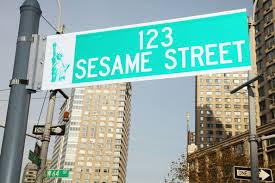The recent New York Times story came as a surprise: “The letters of the day on Sesame Street are H, B and O.” Last week, Sesame Workshop, the iconic nonprofit group behind groundbreaking kids’ TV, announced a five-year deal with premium network HBO, to air new episodes of Sesame Street exclusively on HBO for nine months before appearing on PBS, its home for the past 45 years.
We should have seen it coming. Sesame Street was financially strapped. PBS could not kick in any more funds. Something had to change. Author Michael Wolff, in his book Television is the New Television: The Unexpected Triumph of Old Media in the Digital Age, discusses the enduring power of TV, noting that ad rates continue to rise even as audiences decline; and digital media rates decline, even as audiences grow. Forming a partnership with a paying entity created a sustainable solution. Sesame got funds; HBO got prestigious kids’ and family programming for both its cable network and streaming HBO Now service.
Yet despite this win-win scenario there was an angry outcry on social media. Kids will be exposed to ads; kids will be seeing original programming nine months later; HBO caters to the elite, rather than the under-privileged kids whom Sesame originally targeted.
Come on people! The current season of Sesame Street will continue airing on PBS until the new shows become available. Kids will not become Sesame-deprived. How many of us have really suffered from reading a paperback book months after a hardcover edition came out? Who doesn’t love watching reruns of favorite shows? We’re talking about kids here. Kids, who love watching repeat content. Kids, who watched the same episode of Blues Clues for a week because it was an effective way to play and learn. Nine months doesn’t suddenly transform great content into the cheap-o version; it just makes it free. And more available. As far as the ads: that’s a parent’s choice. Branding is everywhere. Our kids don’t wear blinders.
A 2015 report from the Bureau of Labor Statistics on American Time Use survey found that people spend more time watching TV than all other leisure activities combined. Recent PlayScience research found that TV is the favorite medium for family co-play and engagement. If more programs on more channels increase positive family time, more power to it.
Let’s stop the theatrics and continue to role the cameras. Sesame Street’s neighborhood may be changing. But the street is still as vibrant as ever.
Come hear how the viewing landscape is changing all across platforms at Sandbox West in LA on October 12 and 13. Registration is open!
Email me at wendy@playsciencelab.com.
























